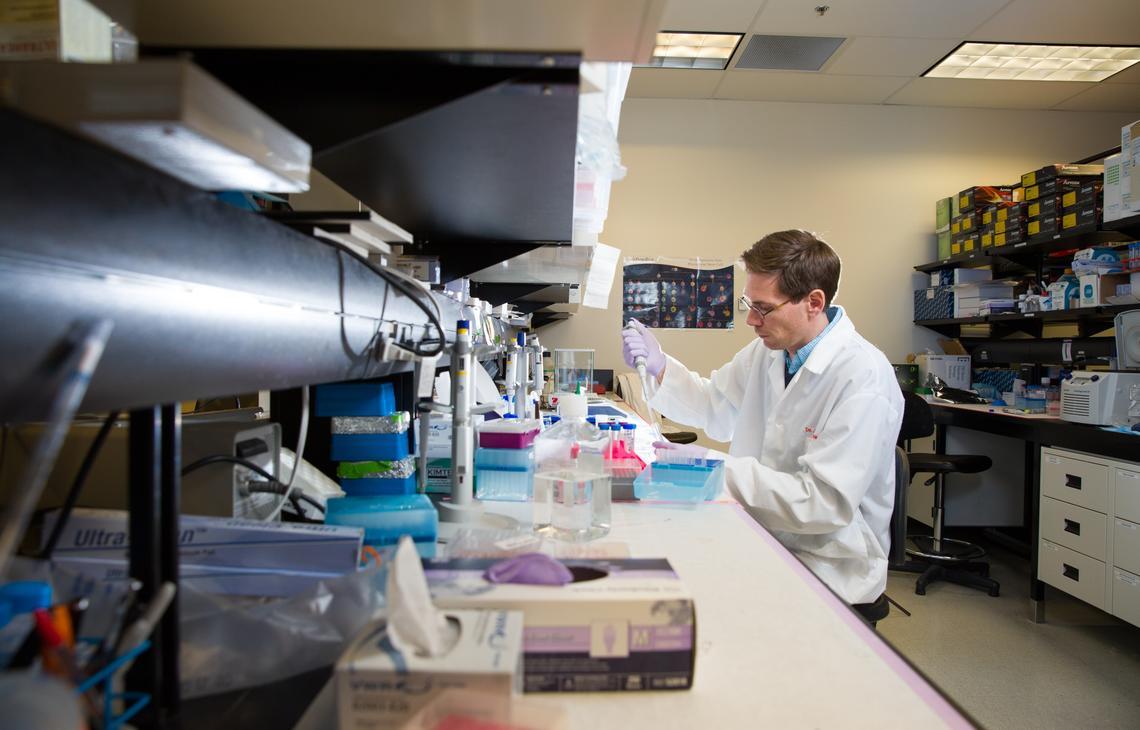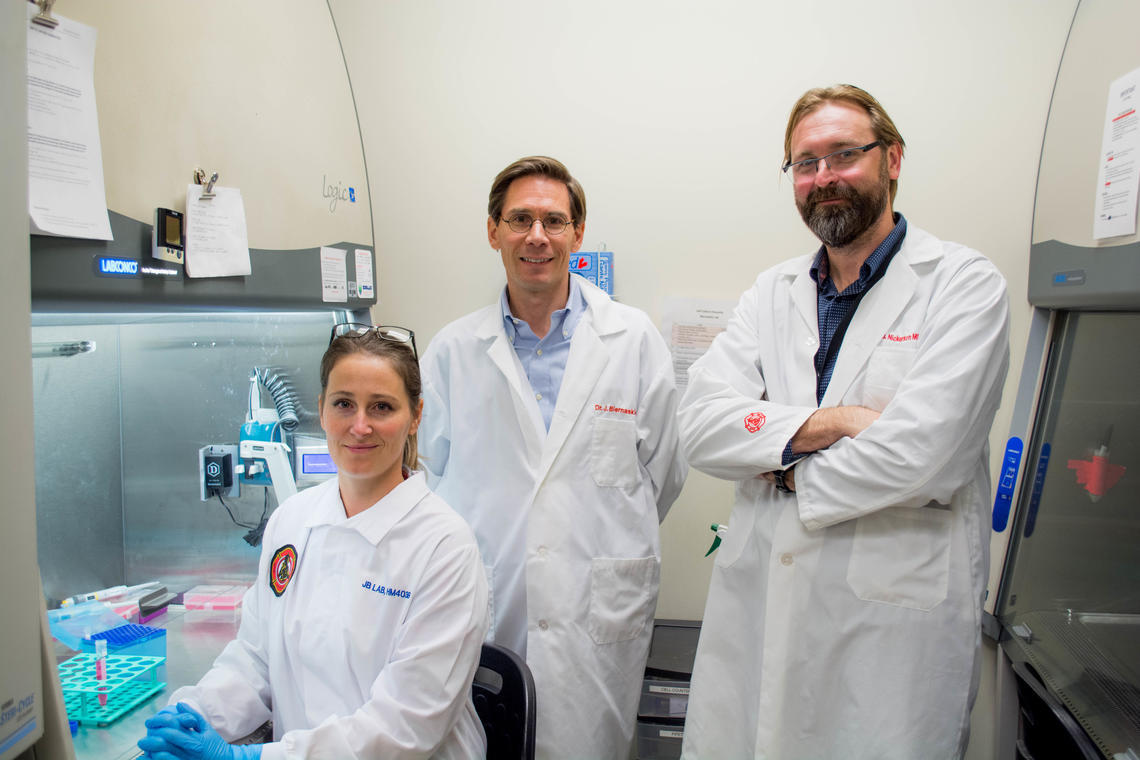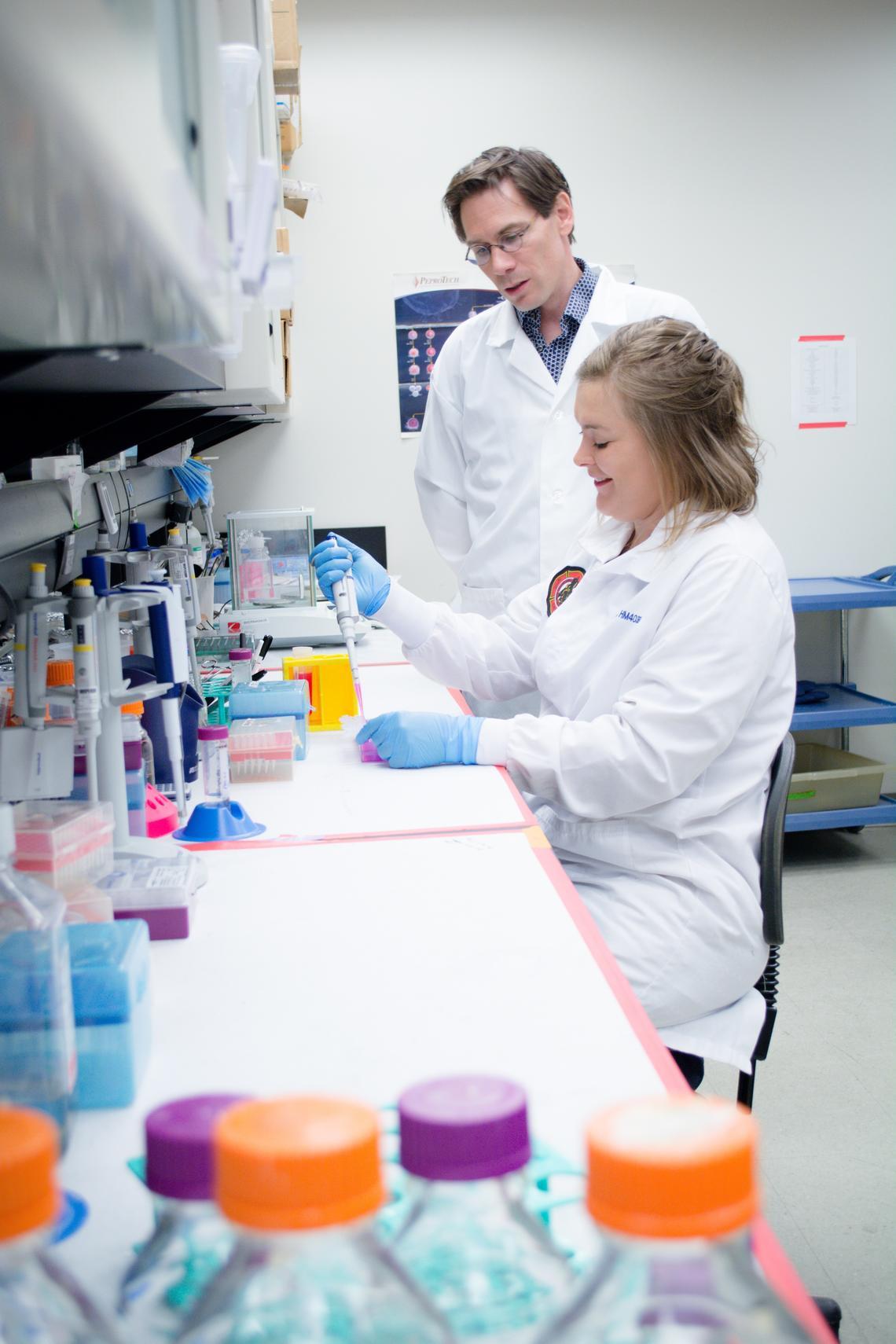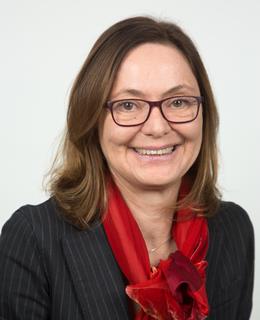Stem Cell and Materials Based Strategies for Skin Regeneration
Creating new skin tissue to help skin grafts heal faster and better with less scarring and improved patient well being

Jeff Biernaskie and his team are creating new skin tissue to help skin grafts heal faster and better
People who suffer from a severe skin injury, such as a burn, typically receive a split thickness skin graft (STSG) in surgery. Although STSG closes the wound, it creates scar tissue, disfigurement and chronic disability. And, because the skin graft is fragile it often requires chronic medical care. All this occurs, mainly, because there is no functional dermal tissue beneath the skin graft.
BME researchers with expertise in stem cell biology, bioprocess development and cell expansion, biomaterial engineering, tissue mechanics and clinical care are working on innovative stem cell-based therapies to regenerate skin. They’re taking stem cells from a patient’s healthy skin, creating more of them and then combining the cells with biomaterial delivery systems and placing them within and beneath a STSG to regenerate deep layers of the skin.
This project is transforming wound care. Regenerating new skin tissue may also restore sensory function and reduce the severity of scars—giving people improved mobility, faster recovery and less pain so they can leave the hospital faster and have better emotional and psychological well-being.

Dr. Holly Sparks (left), veterinarian and PhD candidate in the Faculty of Veterinary Medicine, Dr. Jeff Biernaskie (middle), and Dr. Vincent Gabriel, clinician in rehabilitation medicine and project collaborator.

Dr. Jeff Biernaskie (left) and Dr. Jo Stratton (right), postdoctoral fellow in the Biernaskie Lab



